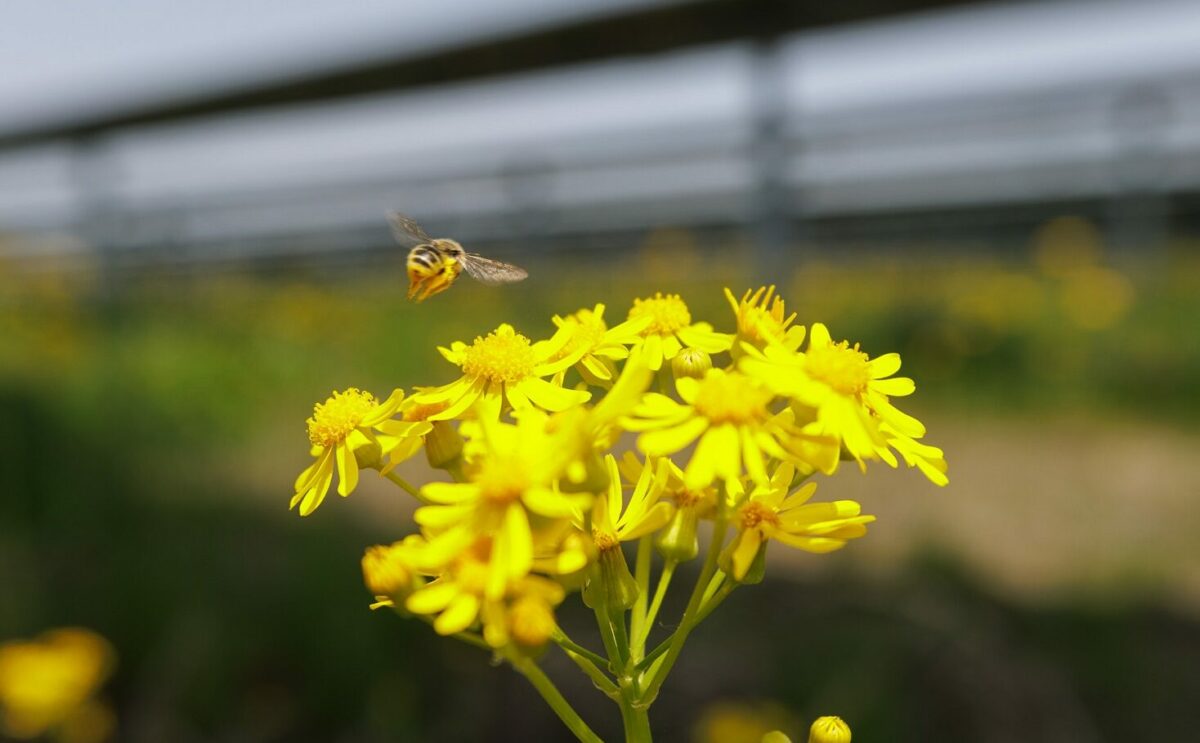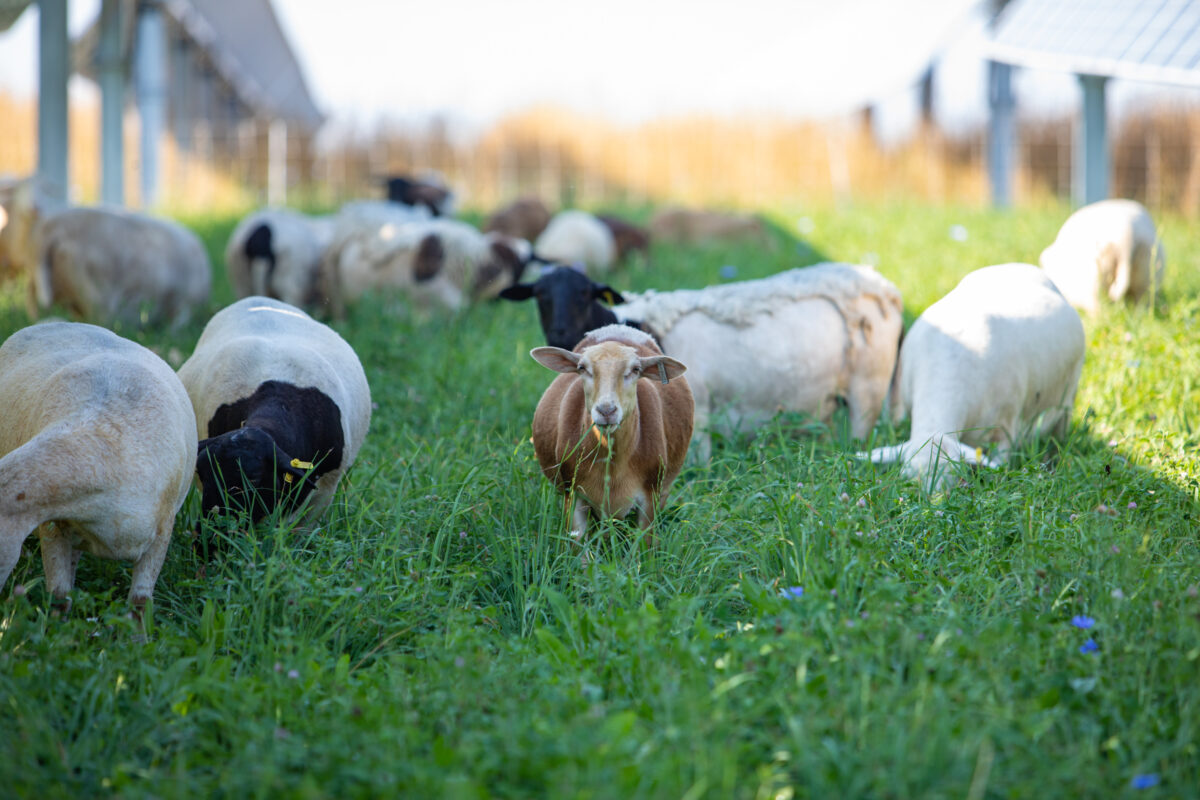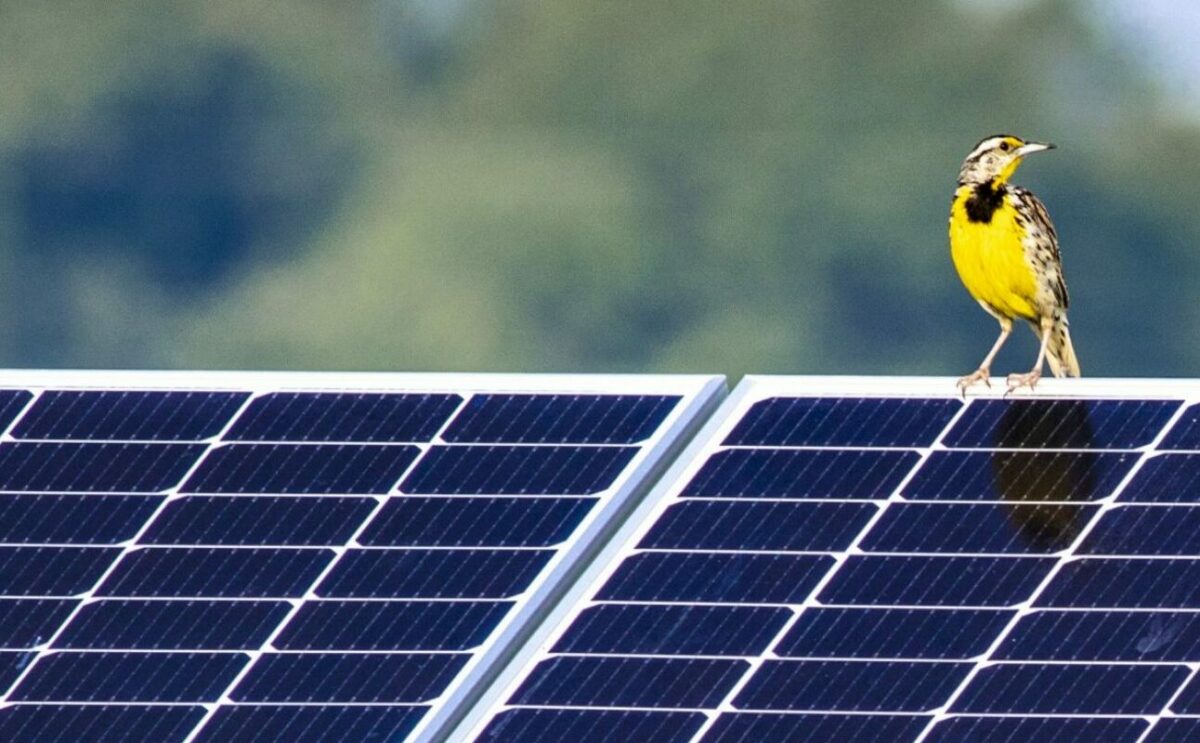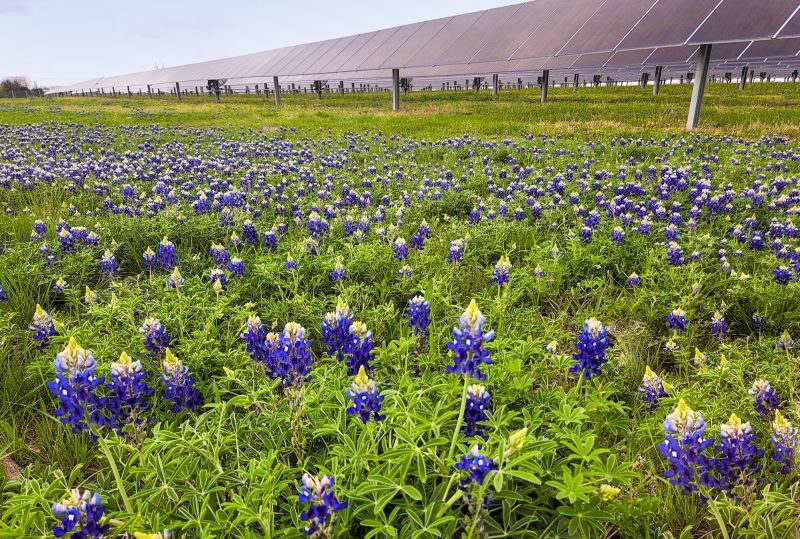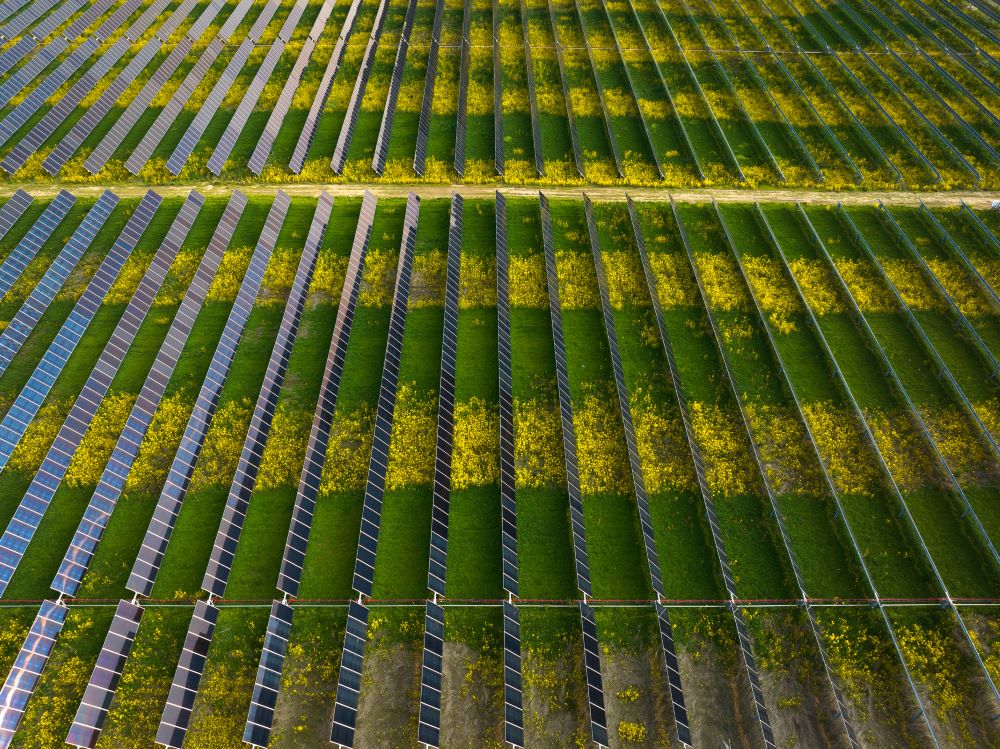Agrivoltaics : Agriculture and renewable energy sharing land
Solar farms can grow more than electricity. Agrivoltaics (agriculture + “photovoltaics”) places crops or livestock underneath and between rows of solar panels. While researchers are exploring fruit and vegetable crops, the most common and successful forms of agrivoltaics at solar projects currently are sheep grazing and bee keeping.
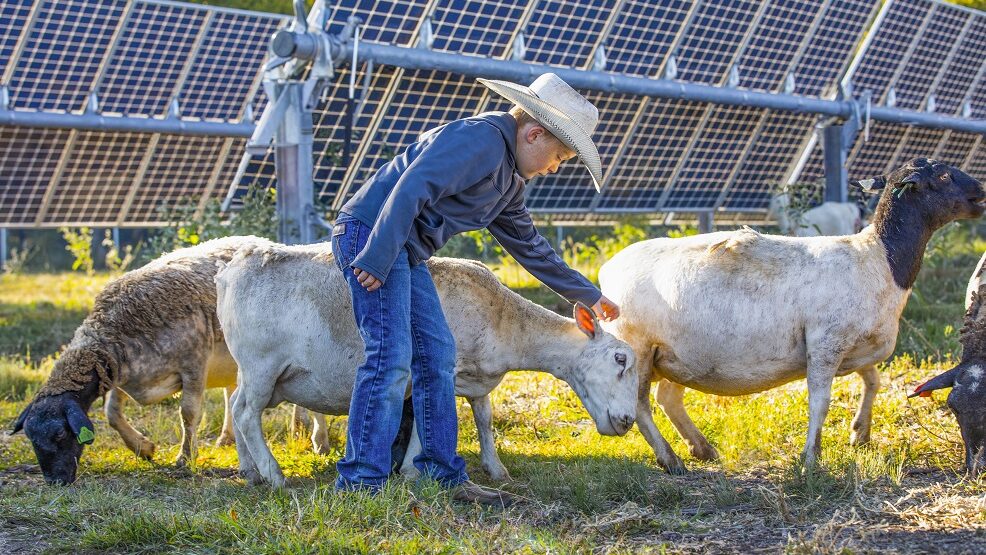
Solar grazing is bringing new hope to America’s farmers
The solar industry is helping revive sheep farming in America. According to the United States Department of Agriculture, the U.S. imports more than half of its sheep products: mainly meat and wool. That wasn’t always the case. At peak, there were more than 50 million head of sheep in the USA. Today, estimates put the number around 5 million.
As America’s family farmers and ranchers face increasing economic stress, opportunities to partner with solar farms are providing new income streams and in many cases, the ability to expand their operations. Even better, solar shepherds are fighting climate change and promoting healthy landscapes while they maintain vegetation under and around the solar panels.
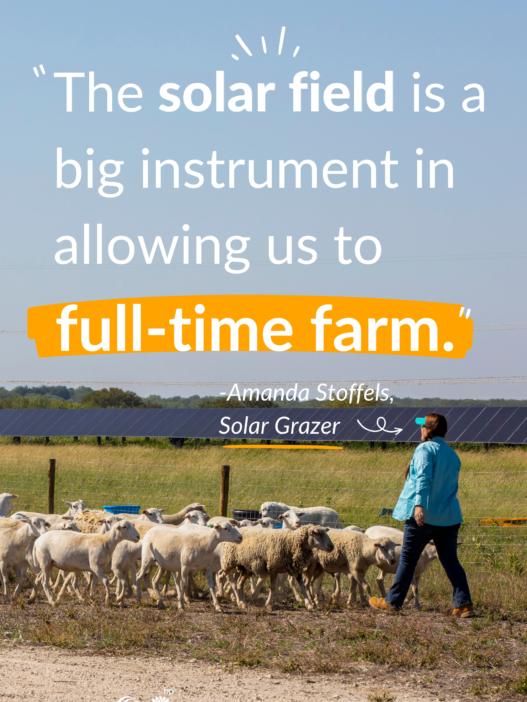
Solar grazing is a triple-win for clean energy, healthy land and family farms
Research has shown that managed grazing simultaneously works to improve soil health and foster healthy ecosystems, while managing vegetation around the solar panels through natural, effective means. As the sheep graze, they trample waste and old plant matter into the earth. As the organic material decomposes, it fertilizes and rejuvenates the soil.
Solar grazing helps strengthen rural economies, too. Grazing sheep at solar farms contributes dairy, meat, and wool to the locally sourced, renewable farm market. Contracts for grazing services provide farmers with a reliable source of new income, on top of what they earn via products they produce. Farmers who are leasing their own land to the solar project may see as many as three revenue streams from their land: lease payments, grazing contract and agricultural products. Increased, diversified revenue and access to productive land may help a farm increase its resilience, or even grow.
Read more about the benefits of solar grazing
-
Improve soil health and carbon sequestration
Managed sheep grazing has been proven to improve soil health and carbon sequestration. A recent study showed grazing significantly increased total carbon storage and available nutrients in the soil.
-
Manage vegetation through natural means
Solar grazing keeps the vegetation under and around the solar panels at an optimal height, without the use of machinery or emissions.
-
Foster healthy ecosystems
As the sheep graze, they trample waste and old plant matter into the earth. As the organic material decomposes, it fertilizes the vegetation under and around the solar panels, helping increase biodiversity by supporting a large variety of ecosystems.
-
Strengthen rural economies
As America’s family farmers and ranchers face increasing economic stress, opportunities to partner with solar farms are providing new, reliable income streams and often the ability to expand their operations.
-
Revive US sheep industry
Today we import more than half of our sheep products. That wasn’t always the case. At peak, there were more than 50 million head of sheep in the USA. Today, estimates put the number around 5 million.
Solar honey
Beekeeping at solar farms
According to the USDA, US honey demand reached an all-time high with a record setting consumption of 618 million pounds in 2021. The United States is the second largest honey consumer behind China, and we’re importing around 70% of the honey we consume, primarily from Vietnam, Argentina, India, Brazil, and Ukraine.
This means there is a huge opportunity to grow domestic honey production in the United States! But healthy and productive honeybee hives need access to rich habitat where they can collect nectar from flowers. Unfortunately, populations have been declining due to habitat loss and pesticide use.
The good news: Solar farms can provide stable, long-term homes for bees and butterflies. In fact, many of our solar projects around the world bring on local beekeepers as a way to integrate agriculture into the project and keep the land in food production while generating renewable energy. What a SWEET opportunity! This helps pollinate crops on surrounding farmland while supporting America’s home-grown honey industry.
Lightsource bp’s first solar honey operation in the United States is at our Briar Creek solar farm.

More agrivoltaics stories from Lightsource bp
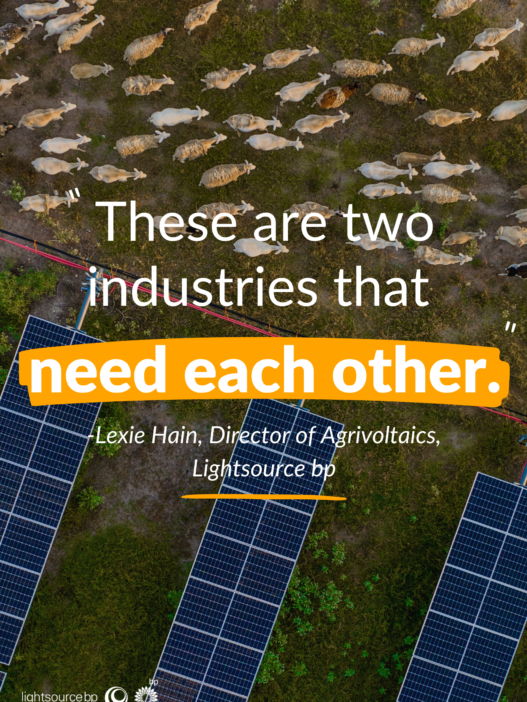
Agrivoltaics research & resources
Partner: American Solar Grazing Association
Study: Managed sheep grazing can improve soil quality and carbon sequestration at solar photovoltaic sites
Study: Examining the Potential for Agricultural Benefits from Pollinator Habitat at Solar Facilities in the United States
Factsheet: Solar & Agricultural Land Use
Agrivoltaics in the media
In the news: Sheep are the solar industry’s lawn mowers of choice, Wall Street Journal
In the news: How Ranching and Solar Co-Exist in Texas, Forbes
Get in touch
If you are interested in learning more about agrivoltaics and solar grazing opportunities with Lightsource bp in the USA, please reach out to grazing@lightsourcebp.com.
Learn more about our Responsible Solar approach to environmental sustainability
Biodiversity
Learn how we're increasing biodiversity and conserving habitat at our solar farms.
Research & Monitoring
Learn how we're contributing to academic research and industry best practices.


